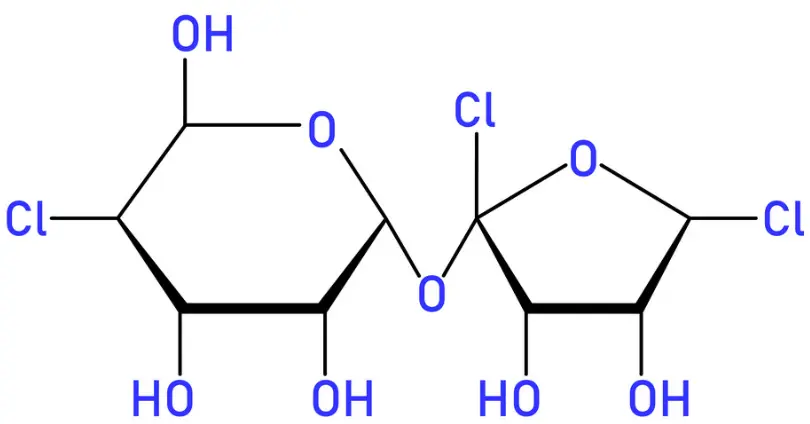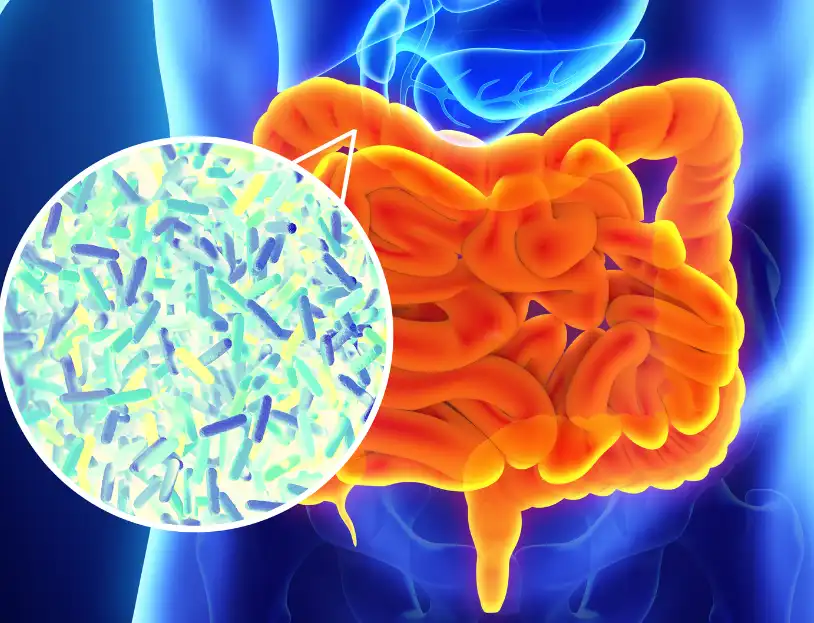Is Sucralose Safe to Use in Food Products?
2025-04-09 10:35:48
Sucralose has become one of the most widely used artificial sweeteners since its FDA approval in 1998. As consumers grow more health-conscious about sugar intake, many turn to sugar substitutes like sucralose, which is approximately 600 times sweeter than table sugar. Despite its widespread use in thousands of products worldwide, questions persist about its safety and potential long-term health effects. This article explores the current scientific understanding of sucralose safety, examining regulatory approvals, research findings, and considerations for different population groups.

What Are the Long-term Health Effects of Consuming Sucralose?
Impact of Sucralose on Gut Microbiota
Some studies suggest that sucralose may alter gut microbiota composition, potentially reducing beneficial bacteria. However, many of these studies used extremely high doses of sucralose, far exceeding typical human consumption levels. The effects appear to be dose-dependent and may vary between individuals. Research indicates that changes in microbiome composition after sucralose intake are generally temporary and revert to baseline after discontinuation. Most human studies on sucralose and gut health have been relatively short-term, making definitive conclusions about long-term impacts difficult. The FDA and other regulatory bodies maintain that sucralose is safe for consumption at approved levels.
Sucralose and Metabolic Health
Research on sucralose's relationship with metabolic health has produced mixed results. Some studies suggest that sucralose might influence glucose and insulin responses in certain individuals, particularly those who are obese or have insulin resistance. However, most clinical studies have not found significant adverse effects on blood glucose control in healthy individuals. The American Diabetes Association notes that sucralose can be part of a healthy eating pattern for people with diabetes. The scientific consensus currently supports that moderate consumption of sucralose within established acceptable daily intake levels is unlikely to cause significant metabolic disruption in most healthy individuals.
Sucralose and Neurological Effects
Some animal studies have suggested that artificial sweeteners, including sucralose, might influence brain activity related to reward pathways and appetite regulation. However, human studies examining the neurological impacts of sucralose have been limited and yielded inconsistent results. Most evidence suggests minimal penetration into brain tissue at normal consumption levels. The current scientific consensus maintains that sucralose consumption within established safety guidelines does not pose known neurological risks for most individuals. Some researchers have called for more longitudinal studies to better understand potential effects of long-term exposure.

How Does Sucralose Compare to Other Artificial Sweeteners in Terms of Safety?
Regulatory Approval Process for Sucralose vs. Other Sweeteners
Before FDA approval in 1998, scientists conducted more than 110 studies examining sucralose's potential effects. Similar exhaustive reviews were conducted by regulatory authorities in over 80 other countries. This process was particularly rigorous compared to some other artificial sweeteners. The FDA established an Acceptable Daily Intake (ADI) for sucralose at 5 mg/kg of body weight per day, while the European Food Safety Authority set it at 15 mg/kg. These values incorporate substantial safety margins, typically 100 times lower than levels showing no adverse effects in animal studies.
Chemical Stability of Sucralose Compared to Alternatives
Sucralose demonstrates remarkable chemical stability across various food processing conditions. It remains stable at high temperatures (up to 450°F/232°C), making it suitable for baking and cooking applications where other sweeteners might degrade. Studies have found minimal degradation even after storage in acidic beverages for over a year. In contrast, aspartame exhibits lower stability in certain conditions, breaking down when exposed to prolonged heating. Sucralose's chemical inertness extends to its interactions with other food ingredients, showing minimal reactivity during food processing or storage.
Metabolic Processing and Excretion Patterns
Approximately 85% of ingested sucralose passes through the digestive system unchanged. The small percentage that gets absorbed into the bloodstream is rapidly eliminated through urine within 24 hours, with no evidence of bioaccumulation. This differs from other sweeteners like aspartame, which is completely metabolized into aspartic acid, phenylalanine, and methanol. The limited absorption and metabolism of sucralose contribute to its favorable toxicological profile across population groups, with the same metabolic pathway observed in children, adults, and elderly populations.
Can People with Certain Health Conditions Safely Consume Sucralose?
Sucralose Safety for Diabetic Individuals
Multiple clinical studies have demonstrated that sucralose does not directly raise blood glucose or insulin levels, making it potentially valuable for people with diabetes who wish to enjoy sweet-tasting foods while restricting carbohydrates. The American Diabetes Association recognizes that non-nutritive sweeteners like sucralose may help reduce added sugar intake without compromising glycemic control. However, while sucralose itself doesn't raise blood sugar, many "sugar-free" products may contain other ingredients that affect glycemic control, making personal monitoring advisable.
Pregnancy, Breastfeeding, and Sucralose Consumption
Research examining placental transfer of sucralose found extremely limited passage of the compound from maternal circulation to the developing fetus. Studies have detected only trace amounts of sucralose in breast milk after maternal consumption. Despite these reassuring findings, healthcare providers often recommend moderation with all food additives during pregnancy and breastfeeding. The Academy of Nutrition and Dietetics notes that while no human studies have demonstrated adverse effects from sucralose during pregnancy or lactation, individual tolerance may vary.
Sucralose and Individuals with Gastrointestinal Conditions
Research on sucralose's impact on inflammatory bowel disease has yielded mixed results. Some individuals with irritable bowel syndrome may have particular sensitivity to sucralose, especially when consumed with other potential digestive irritants. However, these effects vary considerably between individuals. For those with celiac disease or non-celiac gluten sensitivity, sucralose itself is gluten-free and generally considered safe. The current clinical approach for patients with gastrointestinal conditions generally involves personalized assessment rather than blanket restrictions on sucralose.

Conclusion
Based on extensive scientific research and regulatory evaluations spanning several decades, sucralose appears to be safe for consumption for most individuals when used within established guidelines. While some studies have raised questions about potential effects on gut microbiota, metabolic health, and specific population groups, the overall evidence supports sucralose's safety profile at typical consumption levels. As with any food ingredient, individual responses may vary, and moderation remains a prudent approach.
Shaanxi Yuantai Biological Technology Co., Ltd. (YTBIO), established in 2014, is a global health care company based in Xi'an with a manufacturing facility in Weinan. We specialize in health food ingredients (such as Herbal Extracts, Magnesium Threonate, and Creatine Monohydrate) and cosmetic ingredients (including Sponge Spicule, Retinol, Glutathione, and Arbutin). We work with partners in Europe, America, Southeast Asia, and Korea. With a warehouse in Rotterdam for EU distribution and plans for U.S. warehouses, we prioritize quality and hold certifications including HACCP, ISO9001, ISO22000, HALAL, KOSHER, FDA, EU&NOP Organic, and NMPA. We also assist Korean clients with KFDA registration. Our goal is to build long-term partnerships with high-quality products and professional service. For inquiries, contact us at sales@sxytorganic.com or +86-029-86478251 / +86-029-86119593.
References
1. Schiffman, S.S. and Rother, K.I. (2013). Sucralose, a synthetic organochlorine sweetener: Overview of biological issues. Journal of Toxicology and Environmental Health, Part B, 16(7), 399-451.
2. Sylvetsky, A.C. and Rother, K.I. (2016). Nonnutritive Sweeteners in Weight Management and Chronic Disease: A Review. Obesity, 24(3), 576-584.
3. European Food Safety Authority (2017). Safety of the proposed extension of use of sucralose (E 955) in foods for special medical purposes in young children. EFSA Journal, 15(1), 4645.
4. Magnuson, B.A., Roberts, A., and Nestmann, E.R. (2017). Critical review of the current literature on the safety of sucralose. Food and Chemical Toxicology, 106(Pt A), 324-355.
5. Suez, J., Korem, T., Zilberman-Schapira, G., Segal, E., and Elinav, E. (2015). Non-caloric artificial sweeteners and the microbiome: findings and challenges. Gut Microbes, 6(2), 149-155.
6. Roberts, A., Renwick, A.G., Sims, J., and Snodin, D.J. (2000). Sucralose metabolism and pharmacokinetics in man. Food and Chemical Toxicology, 38(Suppl 2), S31-S41.
_1737093401309.png)
